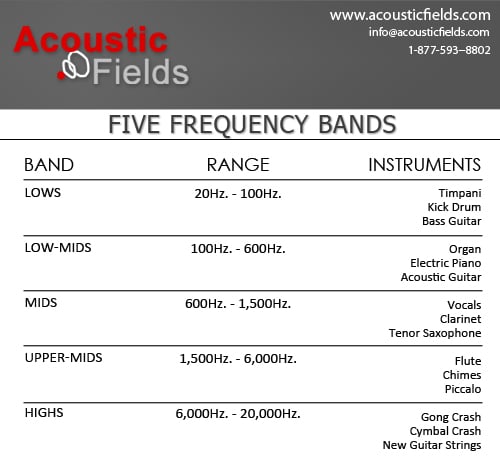The process of soundproofing involves two types of sound energy. It involves the sound energy produced in the room and it involves the sound energy generated from outside the room by various sources. You want to reduce the energy levels from sources within your room and you want to provide the necessary barrier to noise levels outside the room. You want to hear the sound from your hi-fi system and not disturb your neighbors. You do not want to hear the traffic outside your room when you are sitting inside.
So soundproofing is a loose term that gets applied to this general area and in the following video I explain how to think of the distinction between external and internal room sounds so you can decide which path is most important for you.
Dealing with the energy within your room means dealing with low frequency (bass energy) and also middle and high frequency energy. Bass energy requires that you use low frequency absorbing technology in a freestanding unit or built into the room walls themselves. Middle and high frequency issues can be dealt with using acoustic foam and different blends of absorbing materials. It is important to understand where the noise issues are, how large they are and what other areas the sound energy affects.
Low Frequency Absorption
You must use low frequency or bass absorbers to absorb excess bass energy that has the necessary rates and levels of the proper low frequency to accomplish this task. Most companies claim they absorb low frequency energy but most do not. Most raise the frequency they consider to be low frequency. We have seen companies call 125 Hz. a low frequency. It is not.
Our definition of low frequency at Acoustic fields is any energy found below 100Hz. The frequency range of 30 Hz. – 50 Hz. is problematic in over 95% of the rooms we have tested. A low frequency absorber must go down into this range to have any impact on room modes. You must also be able to absorb from 30 Hz. – 100 Hz. in a more broadband rate and level to compensate for the remaining low frequency energy. Our ACDA – 10 and ACDA – 12 units were designed with these low frequencies squarely in mind.
The Absorber Wall Is One Such Low Frequency Absorption Solution Engineered By Acoustic Fields
Our proprietary foam can handle the middle and high frequencies in a smooth and even pattern from within the room. Our PFP series of foams has four thicknesses to satisfy any acoustical absorptive objective.
Barrier Technology
External noise control is best dealt with through barrier technology. A barrier is constructed of materials that are selected to work together in an acoustical manner that block out a lot of noise from outside. Concrete and foam are common barrier technologies and their application is a complicated process and must be dealt with carefully. Consult our barrier technology section for more information.
Please feel free to browse through our range of Soundproofing Solutions at your leisure. Our ACDA series, Abrsorber Wall Series and Sound Barrier Technology are ideal for your needs.




